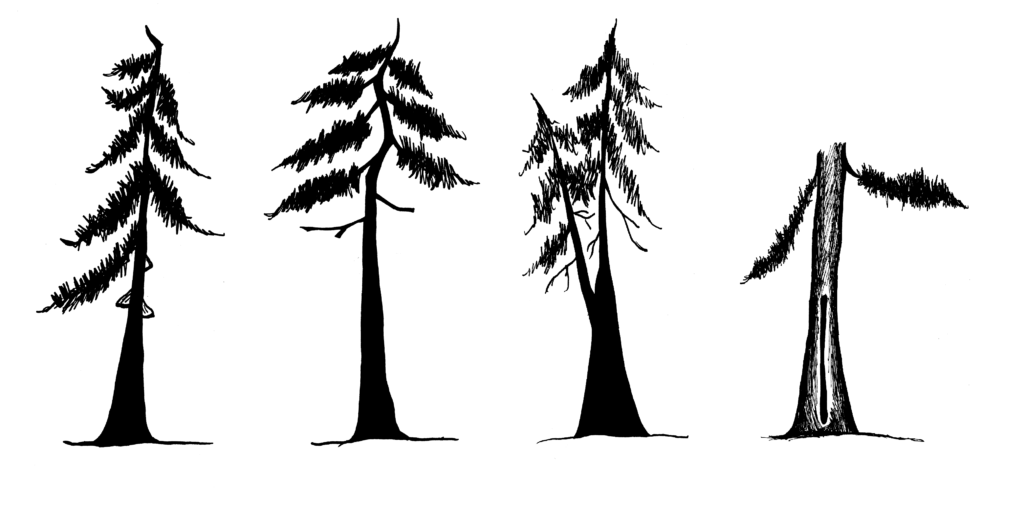6.4 Characteristics of Suitable Site Index Trees
“Site trees” are used to assess a site’s inherent ability to grow trees, and therefore should be the best trees on the site. Trees expressing the full potential of the site are selected, not those that have been subjected to damage, injury or disease. A tree with a broken top obviously is not as tall as it would have been without the breakage on any given site, and using such a tree would falsely indicate a lower site index than the site is capable of producing. Therefore, in selecting which trees to measure for obtaining site index, care must be taken to avoid those trees that misrepresent the true quality of a site. A site tree must meet all three of the following criteria:
- It must be in the dominant or codominant crown class.
- It must be free from past disturbance, injury or damage. Site index trees cannot have broken tops, scarred trunks, damaged or compacted root systems, insect injury and so on. These occurrences reduce a tree’s health and vigor so that it does not express the site’s full potential for growth.
- It must be free from past suppression. Some trees can tolerate heavy shade when they are young, and then put on rapid growth when the canopy opens up, allowing full sunlight to shine on them. This pattern is not acceptable for a site index tree, since light availability dominated the tree’s ability to grow. The tree was not expressing the site’s full potential when shaded.
Dominant and codominant trees should be examined carefully for outward signs of injury or defect before measuring for site index. In addition, each increment core sample used to estimate age should be checked for evidence of past suppression or injury. Dramatic shifts in the ring sizes, presence of rot, charcoal, and other abnormalities can indicate previous impacts (Figure 6.6).

The following are illustrations of trees not suitable for site index determination, due to defect, injury or past suppression (Figure 6.7).


